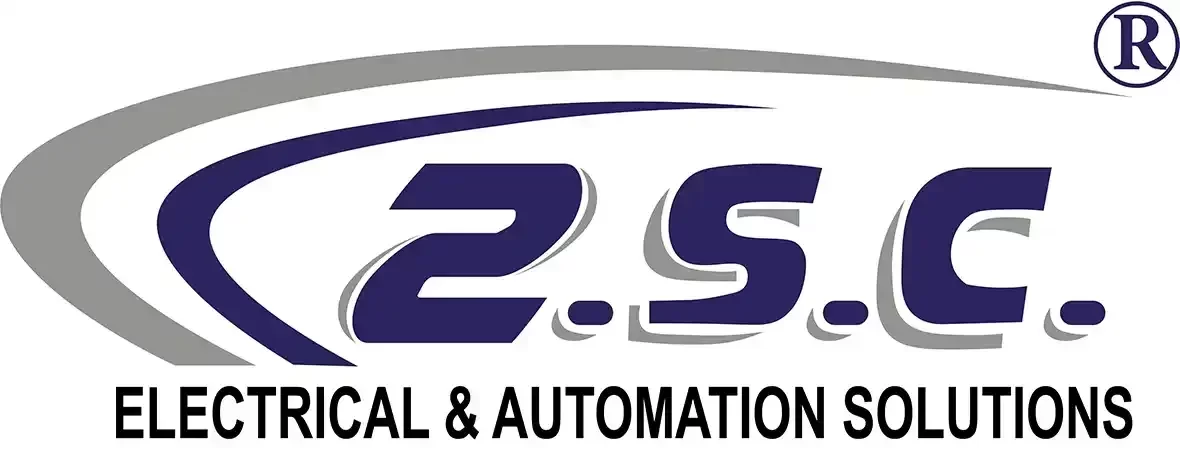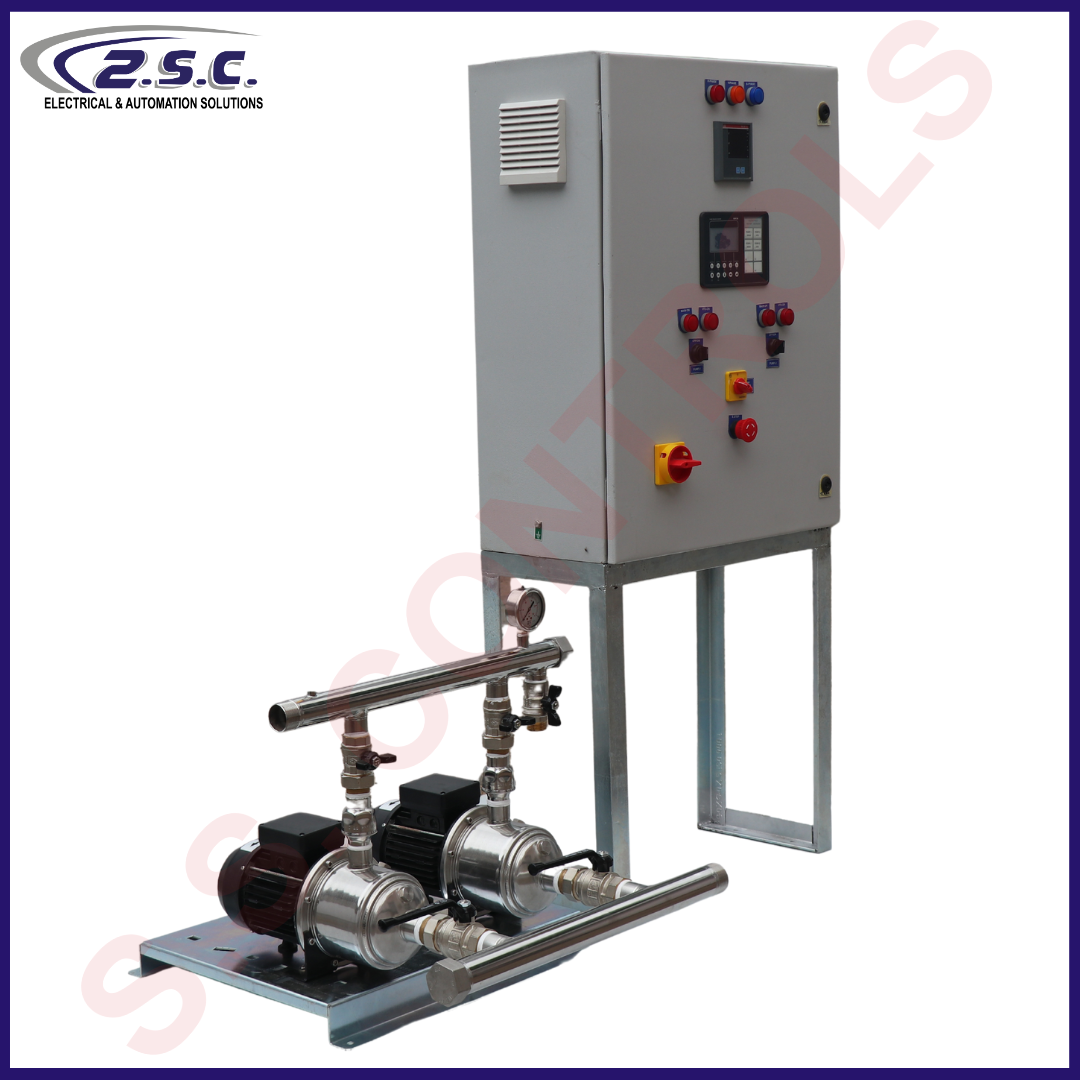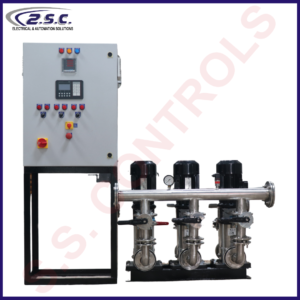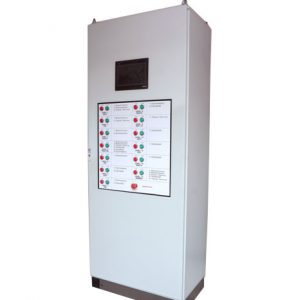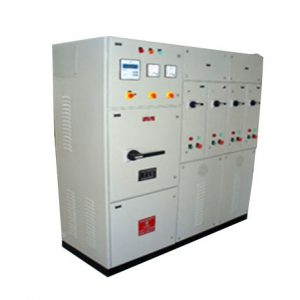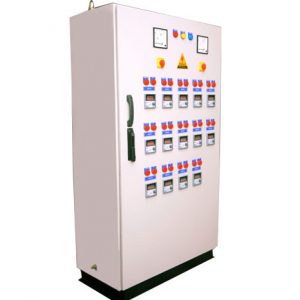LT PANEL & PDB PANELS
LT panels are responsible for distributing the power to various sub LT panels by receiving it from the transformer. These are rated for 430 V, 3-phase, 50Hz, three or four wire system.
It is a floor mounted free standing unit and it is totally closed and extensible type. Its design includes all provisions for safety of operation as well as for maintenance personnel.
Description
LT panels are responsible for distributing the power to various sub LT panels by receiving it from the transformer. These are rated for 430 V, 3-phase, 50Hz, three or four wire system.
It is a floor mounted free standing unit and it is totally closed and extensible type. Its design includes all provisions for safety of operation as well as for maintenance personnel.
S.S. CONTROLS offer a wide range of LT switch boards that are available in both standard and customized sizes. These are applicable for automatic equipment, home appliances and communication products and come with the features like optimum power transmission and long service life.
In an industrial electric power system electric power is supplied from either private utilities or public utilities. The supplied voltage is in the range of 11KV, 33KV, 66KV or 132KV. These high voltages are stepped down to a low voltage using step-down transformers.
The voltages in the range of 440 volts or below are called as low tension systems. This stepped voltage is further supplied to various panels and equipments through a switchgear arrangement that consisting of electrical switches, circuit breakers, fuses, protection equipment, metering boards, etc.
The figure shows a schematic diagram of the power distribution. This model scheme is mostly employed for large and medium scale industries. In some cases, sub-LT panels are not found; instead power is supplied directly from LT panels to SDBs depending upon the size of distribution area where the number of units to be supplied is the major consideration. The element in this power distribution model included LT panel, sub-LT panel, SDB (sub-distribution board), PDB (power distribution board) and LDB (lighting distribution board).
Various transformers supply is given to the LT panels, which acts as a main switching system for entire power distribution scheme and carries the total load demand. We will discuss the elements inside of the LT panels in brief later in this article. The output feeders of the LT panel are connected to sub-LT panels which are placed for a group of loads over a given section to supply the demand.
Thconsist of utilities bus bar chamber as well as DG (diesel generator) set bus bar chamber so that some loads (SDBs) can be switched to DG supply during less amount of power supplied from utilities. However, most cases DG chamber may not be included in sub-LT panels instead it is placed in LT panel itself. Sub LT panels also include capacitor banks or APFC unit to improve the power factor.ese panels also
S.S. CONTROLS manufacture Power Distribution Panels using fine quality products. Our products find wide applications in electric industry. These provide protection from fault and offer efficient monitoring. These products are functionally superior.
S.S. CONTROLS offering a wide range of power distribution board residence (PDB) residence that are precision designed for the power distribution in different sections of an industry, big building, etc. where only short circuit protection and overload protection are required. These protective devices can be fitted with different protective relays which can trip the circuit breaker against various types of faults.
Features:
- Energy-efficient design
- Flawless finish
- Long-serving life
S.S. CONTROLS manufacture PDB residences, these panels are used for dividing main electric power feeds into the various circuits. The power distribution panels can be availed with MCCB / SFU / MCB fully equipped with all necessary safety precautions. Our power distribution panels are applicable for Residential buildings, Industrial buildings, Hotels, Stadiums, Airports, etc.
Applications:
- Residential buildings
- All Industrial buildings
- Airport
- Stadiums
- Outdoor fabrication centers
An AMF control panel (Automatic Mains Failure control panel) is the ideal choice in cases where you have to control a generator that is connected to the Mains in a standby configuration. The AMF control panel is fitted with an AMF controller that manages, in a fully automatic way, the connection assignment of the LOAD to MAINS or GENERATOR avoiding connection MAINS to GENERATOR. The panel includes miscellaneous equipment: battery charger, electronic circuit boards, power relays, and terminal blocks. The AMF controller is conveniently tasked with driving the power circuit breakers. The size of the circuit breaker capacity and wires defines the required power rating of the panel.
Some features of AMF panels are:
- Provides continuous monitoring of three-phase
- Voltage/current/frequency of mains & DG
- As well as battery voltage of DG
- Available in different models
- Automatic shutdown during DG fault
- Fault indication via LED/LCD
- Configurable solid-state output
[1] POWER SUPPLY CONNECTION. The AMF controller is supplied by the battery of the engine. The controller can work in the range 6 up to 36VDC. The AMF controller is very well protected against spikes generated by switching heavy inductive load during the start and stop sequences of the engine.
[2] RS485 SERIAL INTERFACE CONNECTION. The controller supports the MODBUS protocol that will allow you to control and monitor the generator from a remote location.
[3] CANBUS SERIAL INTERFACE & CONFIGURABLE INPUTS. The BeK3 controller is a very flexible controller able to operate with any kind of engine.
[4] GENERATOR VOLTAGE & MAINS VOLTAGE CONNECTIONS. The controller works in a 3-phase configuration up to 600Vac permanently. Protection fuses are required to protect the cables. Controller inputs feature high impedance (about 2 Mega Ohm).
[5] REAR COVER GROUND CONNECTIONS. The controller is protected by a special steel cover. This protects the controller from electromagnetic fields generated by switching the MAINS & GENERATOR circuit breakers.
[6] CURRENT TRANSFORMER CONNECTIONS. In order to protect all systems from overload, these transformers provide current measurements to the AMF controller.
[7] CONFIGURABLE OUTPUT CONNECTIONS. Allows the controller to configure outputs via programmable options. There are more than 80 options for each programmable output.
Some of the features of our Main LT Panel include:
- CHANGE OVER SYSTEM
- CHANGE OVER MECHANICAL INTERLOCKING SYSTEM
- DISTRIBUTION BOARDS
- AIR CIRCUIT BREAKER.
- INCOMING AND OUTGOING MCCB
- MOTOR CONTROL UNIT
- GENERATOR CONTROL
- LT BUS DUCT
- Reduced line loss – A close coordination between the substation equipment, distribution feeders, and associated equipment is necessary to increase system reliability. Volt/VAR control is addressed through expert algorithms which monitors and controls substation voltage devices in coordination with down-line voltage devices to reduce line loss and increase line throughout.
- Power quality – Mitigation equipment is essential to maintain power quality over distribution feeders. The substation RTU in conjunction with power monitoring equipment on the feeder’s monitors detects and corrects power-related problems before they occur, providing a greater level of customer satisfaction.
- Energy cost reduction – Real-time monitoring of power usage throughout the distribution feeder provides data allowing the end-user to track his energy consumption patterns, allocate usage and assign accountability to first-line supervisors and daily operating personnel to reduce overall costs
- Improved reliability – On the qualitative side, improved reliability adds perceived value for the customer and reduces the number of complaints. Distribution automation features that provide interruption and customer service-related benefits include load shedding and other automatic control functions.
- L.T. Control Panels are used for Power distribution.
- Domestic-LT: for most individual residential connections.
- Commercial-LT: for small shops and offices. Also for hotels, guest houses, theaters, etc.
- Industrial-LT: for very small manufacturing units (like bakery, stone cutting, poha mills, etc).
BENEFITS OF MAIN LT PANEL
- The reduced financial risk of over-or under-building
- Reduced project cost-of-capital over time due to better alignment of incremental demand and supply
- Lower local impacts of smaller units may qualify for streamlined permitting
- Significantly reduced exposure to technology obsolescence
- Local job creation for manufacturing, technician installers/operators
- Higher local, small-business development and taxes vs. overseas manufacturing
- Lower unit-cost, automated manufacturing processes shared with other mass-production enterprises (i.e., automotive industry)
- Shorter lead times reduce the risk of exposure to changes in the regulatory climate.
- Reduced exposure to interest-rate fluctuations
